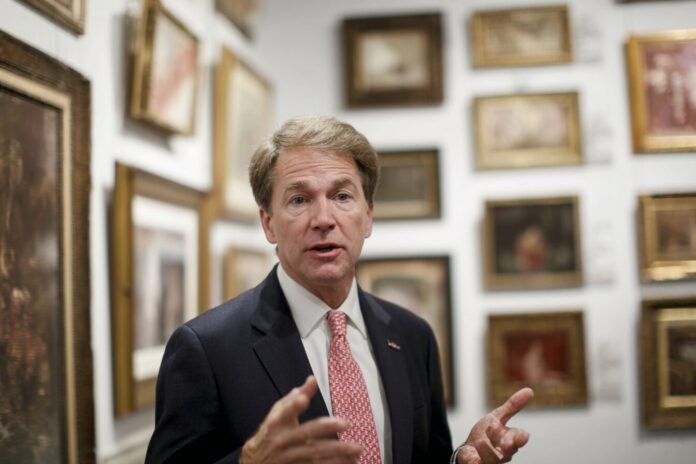How the Art Market Integrity Act Seeks to Transform Transparency in U.S. Art Transactions
Legislators in the United States are taking a bold step toward curbing illicit activities within the art market. Most importantly, the new bipartisan proposal—dubbed the Art Market Integrity Act—aims to align U.S. regulations with stringent European and U.K. standards. Because of long-standing regulatory gaps, criminals have exploited the art market’s anonymity to move and obscure funds, thereby undermining both economic security and the integrity of the art community.
Moreover, this initiative signifies a renewed commitment by lawmakers to safeguard the financial landscape. Therefore, critical stakeholders from diverse sectors are now dialogue partners in shaping a framework that is both robust and fair. By integrating these reforms, the U.S. positions itself on par with international counterparts and reinforces trust in high-value art transactions.
Why Lawmakers Are Stepping Up Oversight
For years, experts and regulatory bodies have expressed concern over vulnerabilities within the U.S. art market. Criminal networks and sanctioned individuals have successfully exploited these loopholes to launder money, finance terrorism, and evade sanctions. Because the U.S. art market—valued at approximately $25 billion and dominating global sales—has largely operated outside traditional financial oversight, these activities have flourished unchecked. As highlighted by various sources, including the recent article from The Antiquities Coalition, this vulnerability has made the market an attractive channel for illegal financial flows.
Furthermore, the growing complexity of financial crimes has urged the need for transparent and accountable mechanisms. Besides that, lawmakers argue that modernizing regulations will help detect and prevent fraud, thereby protecting the reputation of the art industry and its stakeholders.
What Does the Art Market Integrity Act Propose?
The proposed legislation, co-sponsored by Senators such as John Fetterman and Chuck Grassley, introduces comprehensive measures to regulate art transactions more effectively. Because the act expands the scope of the Bank Secrecy Act (BSA) to include art dealers, auction houses, and other intermediaries, it imposes requirements such as customer due diligence (CDD), currency transaction reporting, and the disclosure of suspicious activities. As detailed in Observer, this broadened scope is expected to close significant loopholes in the current system.
In addition, the Act is carefully calibrated to avoid undue strain on smaller actors in the art community. Because original artists, small operators with under $50,000 in annual sales, and transactions below $10,000 are exempted, the legislation maintains a balance between stringent oversight on high-value transactions and safeguarding creative expression. Therefore, while large-scale operations will face rigorous compliance, smaller businesses can continue to innovate without being overwhelmed by regulatory burdens.
Global Context: Matching International Standards
Most importantly, the U.S. is not acting in isolation. In countries like the U.K., throughout the EU, and even in Switzerland, similar anti-money laundering protocols have long governed the art market. Because these regions require comprehensive monitoring of art transactions, their frameworks have enhanced investor confidence and market stability. As reported by The Art Newspaper, aligning U.S. practices with these high standards could significantly reduce the risk of utilizing art deals for nefarious purposes.
Furthermore, the integration of international best practices is expected to boost global trust in U.S. art transactions. Therefore, by adopting these measures, the country not only improves its regulatory environment but also reinforces its commitment to upholding international financial integrity.
Benefits for the Art Market and Broader Society
Enhanced transparency is one of the primary benefits of the proposed act, ensuring that criminal exploitation is significantly deterred. Because rigorous reporting and due diligence practices are enforced, clients and institutions can operate in an environment of increased trust. Besides that, national security is bolstered as funds that could support terrorism or bypass sanctions are effectively intercepted.
Moreover, market confidence is anticipated to rise, making U.S. art transactions more reputable on the world stage. Because honest businesses will benefit from these reforms, the consumer is also better protected against fraud, forgery, and other illicit activities. In this way, the judiciary and lawmakers aim to create an ecosystem in which art and commerce not only coexist but thrive in a secure and transparent marketplace.
Cautious Optimism—and Some Concerns
Although the initiative garners widespread support, some industry stakeholders remain vigilant about potential challenges. Because increased compliance requirements could impose additional costs on mid-sized dealers and institutions, there are concerns that the economic burden might inadvertently affect market dynamics. As noted in detailed analyses including those on The Antiquities Coalition, such administrative loads may prompt creative workaround strategies among savvy actors.
Moreover, there is the risk that extensive scrutiny may lead some participants to fragment high-value transactions to evade detection. Therefore, ongoing dialogue with industry experts and regular regulatory reviews will be critical in ensuring that the Act remains both effective and balanced. Besides that, comprehensive support measures and guidance for affected businesses are anticipated to ease the transition process.
Looking Ahead: What’s Next for the U.S. Art Market?
If enacted, the Art Market Integrity Act promises to reshape the landscape of art transactions across the United States. Because the objective centers on enhancing transparency, reducing fraud, and aligning U.S. practices with global standards, the art market is on the cusp of transformative change. Consequently, galleries, auction houses, and other intermediaries will need to adopt robust compliance procedures in the near future.
Furthermore, as these regulations come into effect, we can expect increased investor and public confidence. Therefore, the future of the U.S. art market appears brighter and more secure, with honest transactions taking center stage and unscrupulous practices being systematically curtailed. By drawing on insights and frameworks from international markets, this legislation sets the stage for a more accountable and dynamic art economy.



